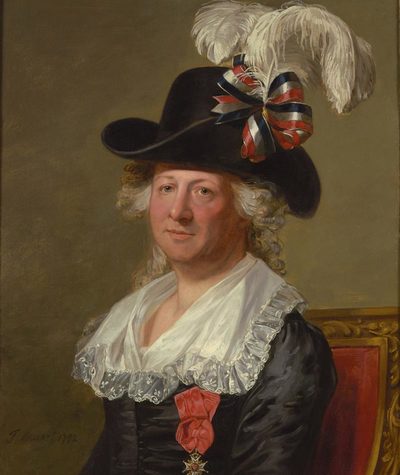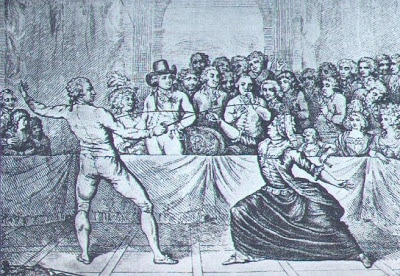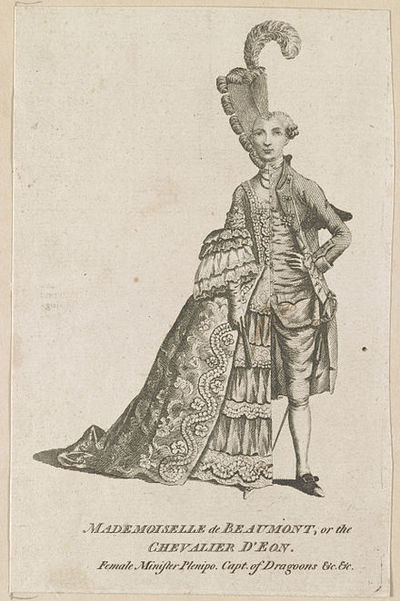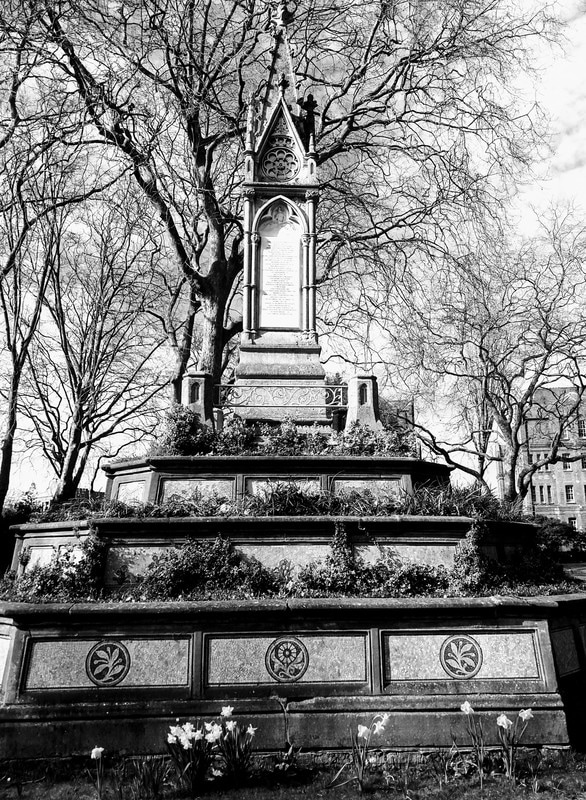|
Charles-Geneviève-Louis-Auguste-André-Timothée d'Éon de Beaumont 1728 – 1810, known boht as Chevalier d'Eon and Mademoiselle d'Eon was a soldier and spy who immigrated to England in 1763 and lived life as a woman from 1777 until their death. In London, D'Eon was famous for winning duels dressed as a woman (and made money from betting). Mademoiselle d'Eon was held as a model by several women authors, including Mary Wollstonecraft and Olympe de Gouges. Wollstonecraft: "I shall not lay any great stress upon the example of a few women (Sappho, Eloisa, Mrs. Macaulay, the Empress of Russia, Madame d'Eon, etc. These, and many more, may be reckoned exceptions; and, are not all heroes, as well as heroines, exceptions to general rules? I wish to see women neither heroines nor brutes; but reasonable creatures.) who, from having received a masculine education, have acquired courage and resolution;" (A Vindication of the Rights of Woman. 1792. Chapter 4.) Gouges: "No doubt you will doubt my valour; Mademoiselle Déon [sic] proves only too well that my sex is not lacking in courage. I will admit there are few with this martial character, but there have been some. And you who are more fearful than women, do you not fear this sex that has distinguished itself in other circumstances, and may I, myself, convince you that Mademoiselle Déon has transmitted to me her intrepidity? Would you refuse me the pleasure of blowing out my brains with you?" (Le Bonheur Primitif, 1789, Translation Clarissa Palmer). It's not clear whether Wollstonecraft or Gouges had any arrested views as to D'Eon's gender - D'Eon was famous both as a man and a woman. But both felt that, as a woman, she was someone to aspire to. There is in fact, surprisingly little discussion of D'Eon's gender - the switch from living as a man to living as a woman seems to have been generally well accepted by all. But when D'Eon died, doctors did feel the need to examine their body to verify gender - this was inconclusive.
D'Eon was buried in St Pancras. When the graveyard was dug up to make space for the railway in 1877, D'Eon, along with other famous corpses, was listed on the Burdett-Coutts memorial (pictured above) - as "Chevalier d'Eon".
2 Comments
Mellie Agon
1/29/2022 08:54:11 am
The post-mortem was not 'inconclusive'. It confirmed he had 'perfectly formed' male organs, i.e. that he was a man.
Reply
sandrine berges
1/30/2022 11:37:18 pm
From the post-mortem certificate: “There were peculiarities in his person which rendered the doubts which so long subsisted respecting his sex the less extraordinary, and appeared to have given facility to his occasional assumption of the female character … There was unusual roundness in the formation of his limbs; a very slight appearance of beard, and his hair was of so light a colour as to be scarcely perceptible on his arms, legs, or chest; the throat was by no means masculine; the shoulders square, and good; the breast remarkably full; the arms, hands, and fingers were those of a stout female, the hips very small, and the legs and feet corresponded with the hands and arms.”Daniel Lysons, The Environs of London: Kent, Essex, and Herts (London: T. Cadell and W. Davies, 1811), p. 646
Reply
Leave a Reply. |
About
This is where I live blog about my new book project, an intellectual biography of three French Revolutionary women philosophers. Categories
All
Archives
November 2022
|




 RSS Feed
RSS Feed